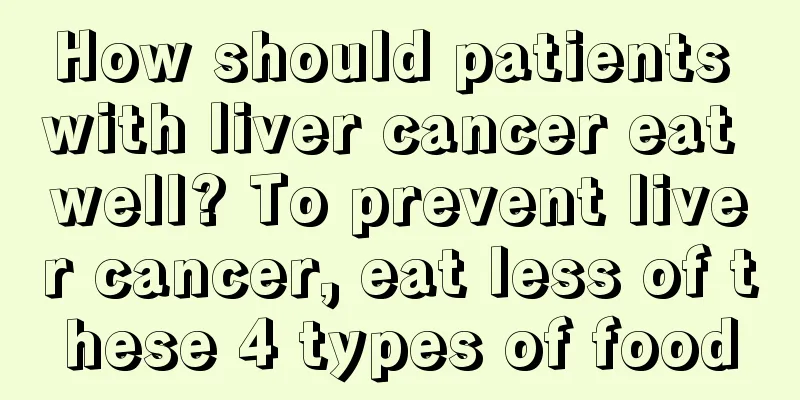What are the clinical manifestations of hypocalcemia

|
There are many symptoms of hypocalcemia, which can be divided into early hypocalcemia and late hypocalcemia. Children with dystocia, intracranial hemorrhage, asphyxia, and sepsis are particularly susceptible to the effects of hypocalcemia. Once the baby is found to have convulsions and respiratory arrest, medical attention must be sought promptly. 1. Hypocalcemia can be divided into early hypocalcemia, late hypocalcemia, and hypocalcemia occurring 3 weeks after birth. Early hypocalcemia: usually occurs within 2 days after birth. Hypocalcemia is prone to occur in babies weighing less than 2,500 grams, in various difficult births, in intracranial hemorrhage, asphyxia, sepsis, hypoglycemia, and hyaline membrane disease. Newborns are also prone to hypocalcemia if the mother suffers from diabetes, pregnancy-induced hypertension, prenatal hemorrhage, insufficient calcium and vitamin D in the diet, and hypoparathyroidism during pregnancy. 2. Late hypocalcemia: refers to hypocalcemia that occurs 2 days to 3 weeks after the baby is born. Most of them occur in full-term infants and most of them occur in artificially fed babies. Fresh milk, milk substitutes made from soybean powder and cereal foods have a high phosphorus content (calcium:phosphorus in milk = 1.35:1). In addition, newborn babies cannot excrete excessive phosphate due to their immature kidney function, thus causing hyperphosphatemia in the baby's body, which is not conducive to the baby's absorption of calcium. Therefore, when the baby consumes too much milk substitutes and cereal foods and cannot fully digest them, it may lead to hypocalcemia. In addition, if the mother does not take in enough vitamin D during pregnancy, or uses sodium bicarbonate to treat metabolic acidosis in newborns, or uses sodium citrate as an anticoagulant during transfusion therapy, the baby's free calcium may be reduced, which may easily lead to "neonatal hypocalcemia." 3. Hypocalcemia occurs 3 weeks after birth: It is more likely to occur in infants with vitamin D deficiency or congenital hypoparathyroidism, and hypocalcemia lasts longer. 4. The main symptoms of hypocalcemia are increased excitability of nerves and muscles, often accompanied by startle, twitching or tremor of hands and feet, convulsions, etc., and at the same time as the convulsions, there will also be varying degrees of respiratory changes, rapid heartbeat, cyanosis of the face, severe vomiting, and bloody stools. The most serious cases may also lead to laryngeal muscle spasms and respiratory apnea. 5. Once the baby has convulsions or respiratory arrest, he should be rushed to the hospital for emergency treatment. As long as the treatment is timely, there will generally be no sequelae. |
<<: What foods are good for rectal prolapse
>>: How to massage for the kidneys, teach you how to massage these three acupoints
Recommend
How long does chemotherapy take to cause hair loss
Currently, the best way to treat cancer in clinic...
Can ginger and honey remove spots?
The skin on the face is the lifeblood of many peo...
How to prevent bladder cancer
Bladder cancer also has a relatively obvious fami...
How to prevent liver cancer, a serious disease? 5 tips to keep you away from the threat of liver cancer
The "bad reputation" of liver cancer ma...
Lysine has the effect of growing taller, what is the effect?
Many people want to grow taller because it will m...
What are the benefits of Shanshen wine
Children living in cities may know little about w...
What are the early symptoms of esophageal cancer?
In my country, the incidence of esophageal cancer...
What should I do if my nails have vertical stripes?
Any changes in any part of our body can indicate ...
Will kidney cyst recur after surgery?
People will experience many diseases in their liv...
How to wash hair dye off clothes
When we are on the sofa, we may not operate it pr...
What are the early symptoms of cervical cancer? What causes cervical cancer?
Cervical cancer, also known as cervical cancer, i...
Symptoms of skin cancer cannot be ignored
Skin cancer is a common oncology disease, and the...
What are the types of lung cancer
What are the types of lung cancer? Lung cancer is...
What causes high glutamyl transpeptidase?
Many people are not very familiar with glutamyl t...
How to wash off asphalt from shoes
Asphalt is often used on some roads. So if we are...









